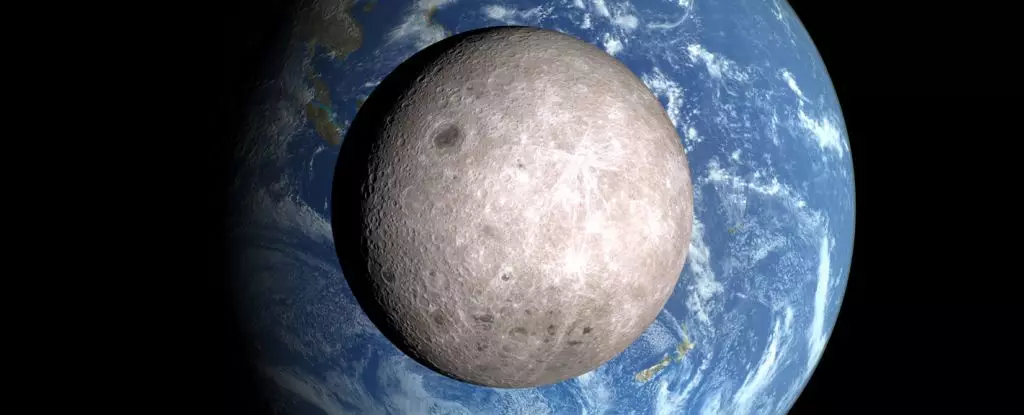Recent research has unveiled a captivating enigma regarding water distribution on the Moon, particularly highlighting a stark contrast between its near and far sides. The far side, which remains forever hidden from Earth’s view, surprises scientists with a significantly lower water content as revealed by lunar samples brought back by the Chang’e-6 mission. This finding is journalistic gold, presenting not only a thrilling scientific mystery but also raising questions about the Moon’s history, evolution, and the conditions of its formation.
Moon’s Distinctive Features and Their Implications
The Moon is dramatically different on either side. The near side, visible from Earth, is characterized by vast, flat basalt plains, known as maria, created through ancient volcanic activity. In stark contrast, the far side showcases a rugged landscape marked with countless craters and features more intriguing for their geological history. The differences between these two hemispheres are not merely aesthetic; they hint at the Moon’s complex geological processes and the events that shaped its evolution.
A crucial question arises: why does such a disparity exist? The answer may lie within the Moon’s interior composition. With the water distribution being heterogeneous, the findings could provide essential insights into the Moon’s mantle composition and the implications of the giant impact theory—an explanation for the Moon’s creation following a colossal collision with a planet-sized body, Theia, over 4.5 billion years ago.
Water’s Role in Lunar Evolution
Water on celestial bodies is an important factor for understanding its geological and environmental conditions. The Moon’s history has been significantly altered by the amounts of water present within its mantle, as it drives volcanic activities and influences crystallization processes. The latest analysis indicates that the water content in the far-side mantle is much lower than previously believed—approximately 1 to 1.5 micrograms per gram of rock in the South Pole-Aitken Basin, one of the oldest and largest impact craters on the far side.
It’s intriguing to consider the implications of this dryness. In contrast to the near side’s rich volcanic history, the relative water scarcity on the far side could suggest an internal cooling process marked by uneven thermal gradients while the two bodies coalesced in the early history of the solar system. Perhaps, the heat retained by Earth’s proximity led to the far side’s slower geological transformations, resulting in fewer maria and, subsequently, less water retention.
Insights from Chang’e-6: A New Perspective
The breakthroughs from the Chang’e-6 mission, which included the first sample return from the Moon’s far side, have turned longstanding theories on their head. Previous analyses utilized materials predominantly sourced from the Procellarum KREEP Terrane—an area that reflects a relatively water-abundant region on the lunar near side. In contrast, the samples retrieved from the far side open the door to redefining our understanding of the Moon’s chemical and physical properties.
The dimensions of the South Pole-Aitken Basin and the dynamics of the massive impact event that formed it suggest that the ejected material may have significantly influenced patterns of distribution across the Moon’s surface. Scientists are now considering the possibility that some water-rich components were displaced toward the near side, leaving the far side suffocated by dryness. These findings serve as a reminder of the intricate dance of celestial bodies, where every collision and interaction plays a vital role in shaping planetary destinies.
Linking Theory to Observation
The observations made by planetary scientists elevate the discourse surrounding the giant impact hypothesis, adding layers of nuance to a well-accepted narrative. While the lower water concentration observed in the far side’s samples is indeed compelling, it reflects just one piece of a larger puzzle. Further exploration and additional sample collection are critical as we strive to understand the Moon’s complex geological history and the role of water in shaping its surface and interior.
As we delve deeper into these cosmic questions, we are reminded of the gaps in our understanding that continue to persist. The quest for knowledge is far from over; it’s only just beginning. Future missions promising to extend our reach to the Moon’s most elusive corners will undoubtedly provide invaluable information that could unravel yet more ancient mysteries of our celestial neighbor, nudging us ever closer to comprehending the forces that have sculpted not only the Moon but also the planets and phenomena found throughout our universe.


Leave a Reply